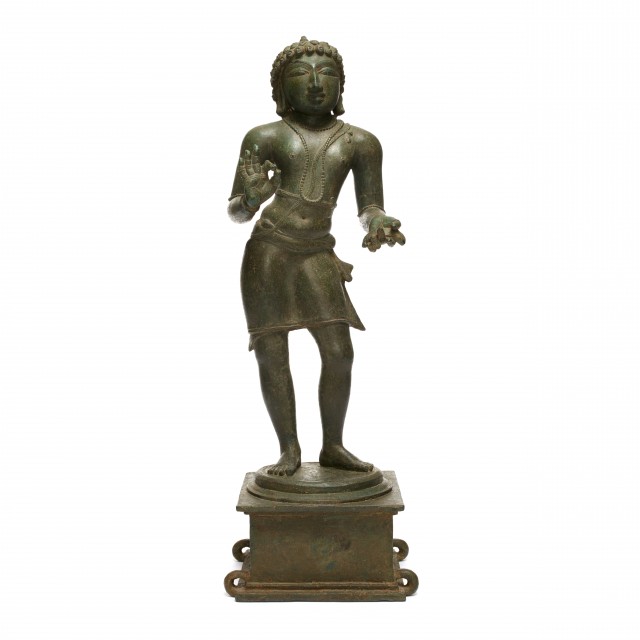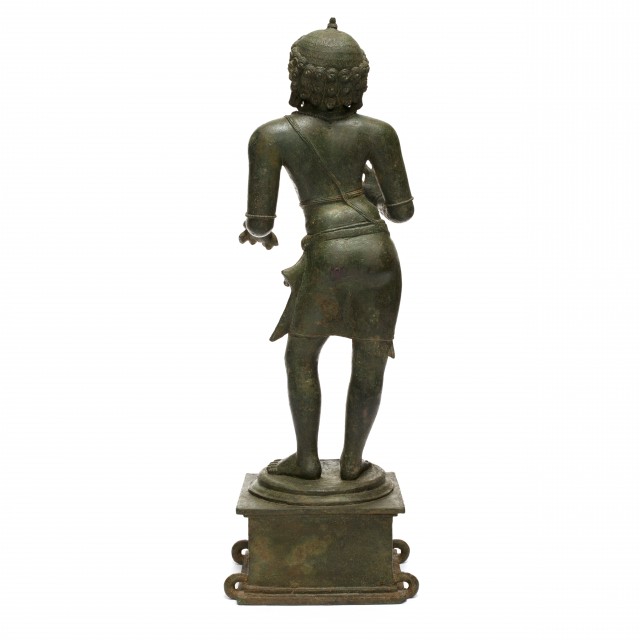Saint Mannikkavachaka

Photography by Synthescape, Digital image © Asia Society

Photography by Synthescape, Digital image © Asia Society
Saint Mannikkavachaka
12th century
India, Tamil Nadu
Copper alloy
H. 19 1/4 x W. 6 3/4 x D. 4 5/8 in. (48.9 x 17.2 x 11.8 cm)
Asia Society, New York: Mr. and Mrs. John D. Rockefeller 3rd Collection, 1979.27
Provenance
John D. Rockefeller 3rd, New York, NY; acquired from Spink & Son Ltd., London, July 18, 1969.
The Asia Society, New York, NY, bequest of John D. Rockefeller 3rd, New York, NY, 1979.
Licensing inquiries
Mannikkavachaka, who lived during the 9th century, is one of a group of sixty-three Hindu saints who dedicated their lives to the worship of Shiva. Sculptures of these saints played an important role in the imagery of south Indian temple complexes and were usually placed in halls surrounding the main sanctum. Before devoting his life to Shiva, Mannikkavachaka was the trusted minister of a Pandya king. One day, while carrying a vast amount of money to purchase horses for the king, Mannikkavachaka encountered Shiva disguised as a sage. He was so moved by the sage's teachings that he forgot his errand and used the king's money to build a shrine to Shiva at Peruntai, in south India. Shiva rescued Mannikkavachaka after he was thrown into prison by the enraged king. Mannikkavachaka can be identified by the manuscript he holds in his left hand. The book is the Tiruvachakam, a set of fifty-one hymns to Shiva written by the saint. Both this sculpture and another in the Asia Society Collection of Saint Sambandar, are reputed to have been excavated from the Tiruvan Vanpanalur Temple, built during the Chola period. Their similarities in size and style, for example, their straight noses and full lips, suggest that they were made at the same atelier.


